Social Science
Zotero Training – Feb. 13 at 10AM, noon or 5 PM
Spend an hour and learn to use this robust citation manager. The workshops cover importing citations, exporting bibliographies into MS Word and Google Docs and sharing resources among groups. No need to register. If you have a chance, download Zotero at zotero.org prior to the class. Workshops will be held in 305 Wurster Hall – the Environmental Design Library’s Training Room.

It takes a village to answer a reference question
Answering reference questions is the bread and butter of what many of us do as librarians. But rarely do we in the Social Sciences Division get the kinds of questions that Emilio Estevez portrayed in his 2018 film The Public. *
In fact, we believe that there are no “dumb” questions and will gladly help our patrons with any of their information needs. More often than not, our patrons have deep and complex research needs that challenge our expertise (and make our jobs fun) and require the collective knowledge and experience of our colleagues.
Take, for example, this query that came in:
“What is the cost of the social safety net in the US?”
To effectively answer this query we engaged in a dialogue with the researcher (what’s known as the “reference interview” in library-speak). In a case like this we want to: determine what kind of data they are hoping to find; determine specific geographic and time constraints; and clarify what, exactly, they mean by social safety net. Are they talking about public/government spending? What about private and philanthropic spending on the social safety net? Do they mean support for low-income people specifically, or all of society?
Jim Church, Librarian for Economics, Political Economy, and International Government Information, suggested OECD Stats which contains statistics by country from the multinational Organisation for Economic Co-operation and Development. OECD Stats has a section for Social Protection and Well Being including, among other things, pensions, sick leave, disability, unemployment, housing assistance, etc. Users can go to Social Expenditure – Detailed Data: United States.
Susan Edwards, Social Welfare Librarian and Head of the Social Sciences Division, suggested that for US data on the federal side, the Green Book provides statistical data of the major entitlement programs (Social Security, Medicare, Temporary Assistance for Needy Families, etc.) overseen by the Committee on Ways and Means. If, however, the researcher is looking into private and philanthropic spending on the social safety net, they can consult GuideStar and the Foundation Directory which provide information about the budgets of a wide range of nonprofit organizations and public charities.
Ann Glusker, Sociology, Demography, & Quantitative Research Librarian, suggested that the researcher remember to consider “grey literature”, which may not appear in peer-reviewed journals or formal publications, but which comes from reputable and reliable sources and which can add a lot to the published literature. In this case, the researcher may want to consult offerings and also staff in Berkeley’s Center for Comparative Family Welfare and Poverty Research, or Stanford’s Center on Poverty & Inequality, which has a page devoted to Safety Net Use.
Monica Singh, Business Librarian, suggested the researcher look at a couple of very helpful guides created by Jesse Silva, Scholarly Resources Strategy and Federal Government Information Librarian; Getting Started with the US Census has a tab on Social/Economic Census Sources.
A happy ending? We never saw the end result of the person’s research. We often send researchers on their way and don’t know how they use the information we’ve provided. But, considering we receive many return visits we must be doing something right.
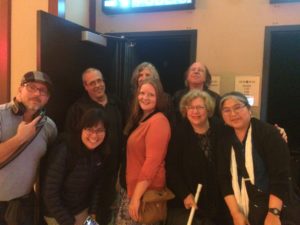
* Note: members of the Social Sciences Division went on a field trip to see The Public when it was playing in the theaters. While we gave Emilio Estevez an “A” for good intentions, some of us wish we’d been able to make suggestions about the dialogue and plot!
“Teaching, Learning and Creating Change with Data”–a Census-Focused Library and American Cultures Event
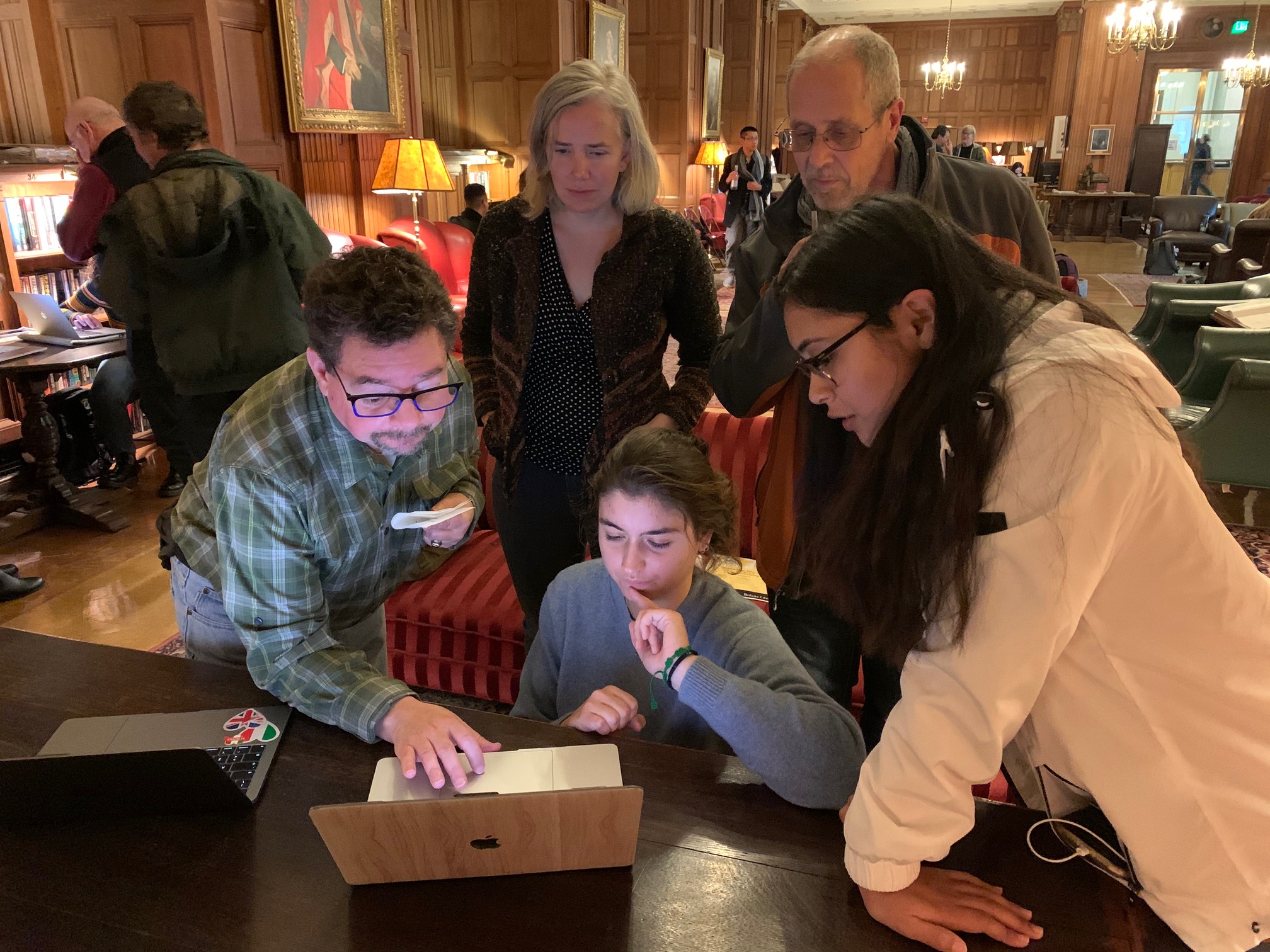
At Berkeley, every undergraduate student must satisfy an American Cultures (AC) requirement. From the American Cultures site: “American Cultures courses are uniquely designed to critically engage in important issues within the United States by helping students develop a deeper understanding of race, culture, and ethnicity in the context of American society.” This long-standing requirement has led to some amazing projects and also some really creative ways of engaging students. And, even if a class is sponsored by, say, the sociology department, the students may be from a wide range of disciplines.
Having just launched “Power and the People: The U.S. Census and Who Counts”, the library’s exhibit on the census (just in time for the 2020 count), its curators were looking for exciting ways to bring census data to life, as part of a kick-off event. We learned about how two American Cultures classes (Sociology 130AC, “Social Inequalities: American Cultures” and Sociology 146AC, “Contemporary Immigration in Global Perspective”) involve students with the census by incorporating census data into projects—and a program was born!
The program held earlier this week, called “Teaching, Learning and Creating Change with Data: The Census and American Cultures”, featured faculty and student presenters outlining and showing their work in the inviting space of the Morrison Library. After short talks by Victoria Robinson, American Cultures program director, Irene Bloemraad, Sociology department and director of the Berkeley Interdisciplinary Migration Initiative (BIMI), and Joanna Reed, Sociology department, students presented their work, the heart of the event. Six Sociology 130AC students showed, on laptops, how they used census data to complement their field work looking at neighborhood characteristics for assigned census tracts along the number 18 AC Transit bus route. Five Sociology 146AC students showed, on conference-type posters, how they used census data along with their investigations of immigrant services in two Bay Area cities (Richmond and Santa Rosa), to map availability of services in areas of greatest need and look for service gaps (in fact, some of this work contributed to a BIMI report). [post continues below photos]
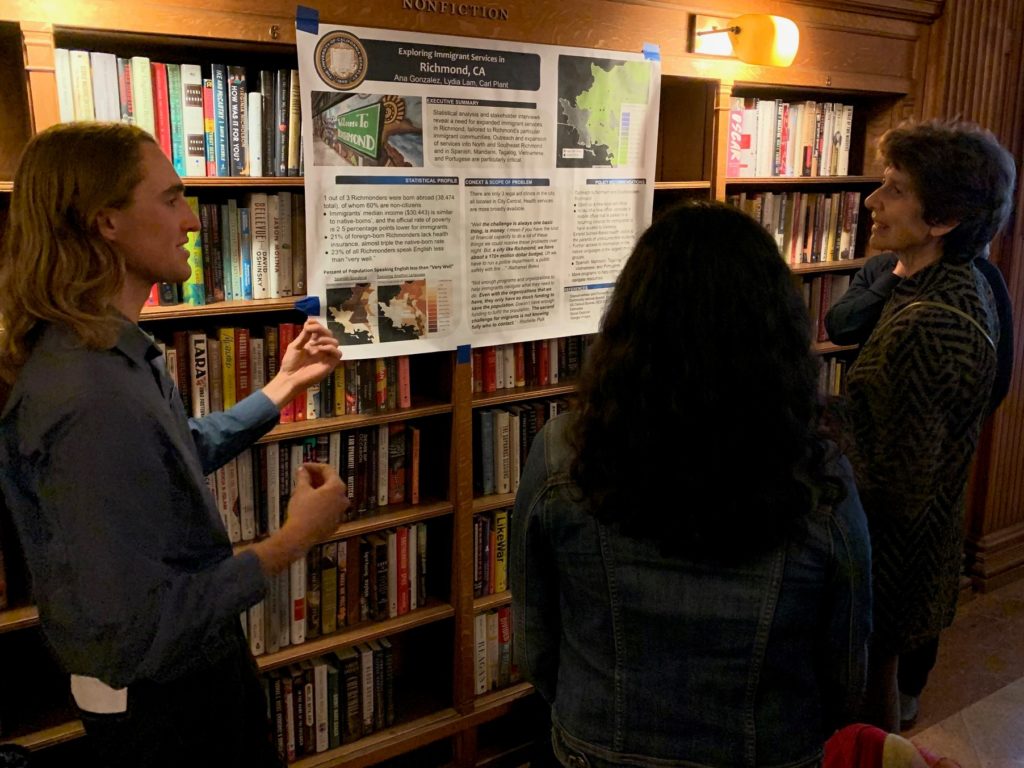

The hallmark of the event was the completely engaged atmosphere of conversation and ideas that resulted from the connections between the students and attendees, and between the broader context of how census data shapes and helps us understand the country we live in. This post is full of photos, because they are what really convey how exciting it was to see what the census can offer to our research and our lives, and to make the case of how important it is for each of us to be counted.
P.S. Don’t miss our second event, a panel featuring renowned experts on race/ethnicity and the census, Cristina Mora, Michael Omi, Taeku Lee, and Tina Sacks, on March 19, 2020, same time (5 pm), same place (the Morrison Library)
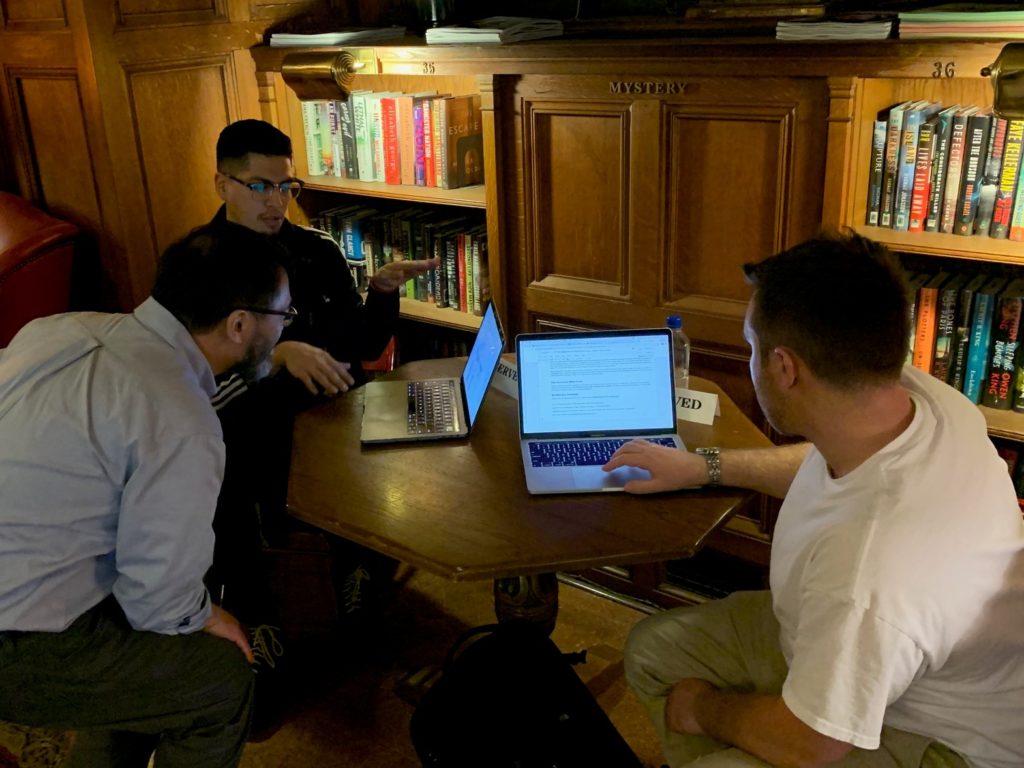
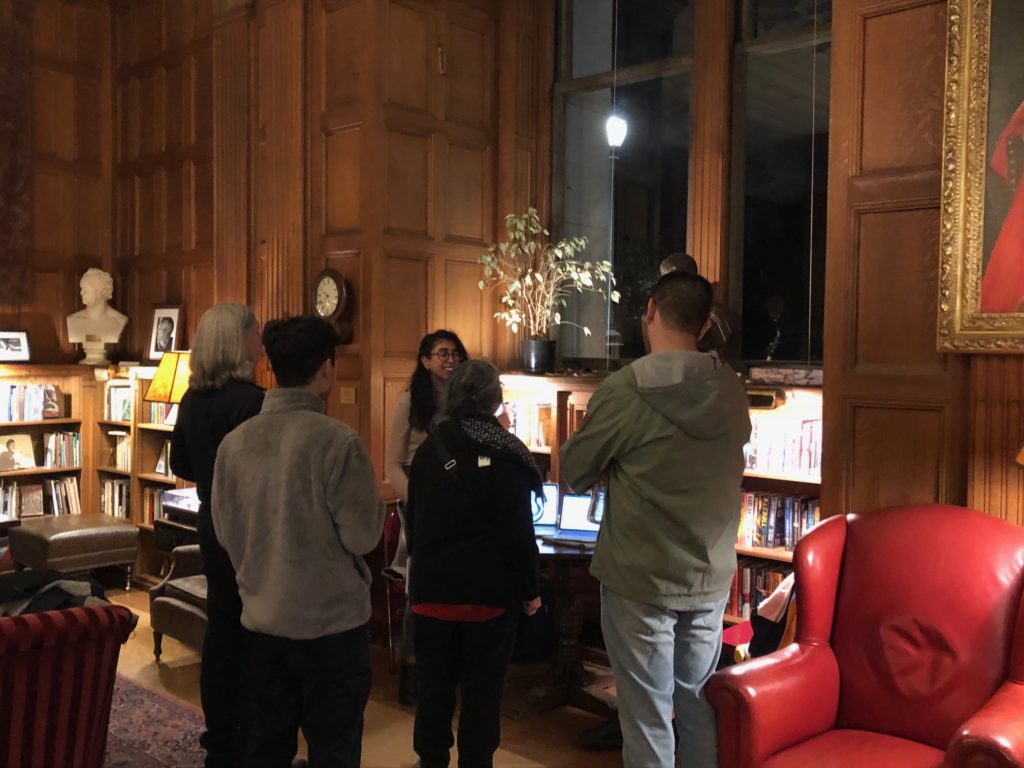
Research Round-Up

Staff in the Social Sciences Division conduct professional research as a way to contribute to the library profession and as a way to engage with library peers beyond Berkeley. Here is a round-up of some recent research output (articles, presentations, etc.) by our colleagues in the division.
Church, James and Josh Quan. 2018. “Patron Driven Data Acquisitions: Prizes, Perils, and Pitfalls.” Federal Reserve Bank of St. Louis. This presentation at the Federal Reserve Bank of St. Louis conference, “Beyond the Numbers: The Economic Data Ecosystem,” chronicles the successes, failures, and lessons learned from a patron driven data acquisitions program piloted by UC Berkeley Library.
Church, James, Susan Paterson, Amanda Wakaruk, and James R. Jacobs. 2018. “Endangered Government Information: Strategies to Protect Government Collections.” New Orleans, LA: American Library Association. This presentation at the American Library Association Annual Conference in New Orleans discussed methods and strategies on how to protect endangered government information in Canada and the United States.
Edwards, Susan, Chan Li, Celia Emmelhainz, Adam Clemons, Liladhar Pendse, and Natalia Estrada. 2018. “Collecting Globally, Connecting Locally: 21st Century Libraries.” P. 700 in Library Assessment Conference: Building Effective, Sustainable, Practical Assessment. Houston, TX. Presented at the ARL Library Assessment Conference, Houston, this research project used mixed methods to explore faculty beliefs about, and scholarly usage of, non-U.S./U.K. and non English language sources focusing on four departments with global research focus — Anthropology, History, Political Science and Sociology.
Emmelhainz, Celia and Marilyn R. Pukkila. 2018. “Being There at a Distance: Connecting the Academic Library to Students Who Study Abroad.” College & Research Libraries News 79(7):376. After meeting with study abroad students in orientation then surveying them after their programs, librarians found that while outreach results in limited additional usage of library resources, it significantly increases student awareness of library resources and feelings of being supported while conducting research on the other side of the world.
Glusker, Ann. 2019. “Collaboration and Innovation: NNLM’s Nationwide Online Wikipedia Edit-a-Thon.” This talk at the Online Northwest conference on libraries, technology, and culture, reports on the National Network of Libraries of Medicine’s (NNLM) ongoing Wikipedia edit-a-thon program, how the the unusual format worked, and tips for hosting an online edit-a-thon.
Glusker, Ann and Nina Exner. 2018. “Responding to Change: Reinventing Librarian Identities in the Age of Research Mandates.” Emerald Publishing Limited. This chapter outlines libraries’ (and librarians’) changing identities in the new world of research mandates from funders, institutions, and publishers.
Phillips, Margaret. 2019. “Readers and Authors of Educational Research: A Study of Research Output on K-12 Education Policy.” SAGE Open 9(2). Focusing on journal articles and reports in the field of education, this study examined the public availability of the publications, publication quality as determined by peer review, and authorship.
Schiraldi, Hilary. 2019. “Stepping Up Library Communications at UC Berkeley.” This poster, presented at the Academic Business Library Director’s Annual Meeting, describes the new Communications Department in the UC Berkeley Library and how it pulled together multiple library communications channels under one unit.
Singh, Monica and Celia Emmelhainz. 2019. “Listening to Unaffiliated Users of the Academic Library.” SAGE Open 9(2). In this study the authors interviewed 10 unaffiliated library users to better understand their perceptions of a large academic library and how the library fits into their daily habits.
An Assembly of Janeites
I’m not sure what the collective noun is for Janeites* (the term popularized by Rudyard Kipling in his short story by that name) to denote admirers of the Georgian-era British novelist Jane Austen, but assembly will do as well as anything! The recent Annual General Meeting (AGM) of the Jane Austen Society of North America (JASNA), held in Williamsburg, VA was indeed an assembly of Janeites, and a fascinating one, attended by this UC Berkeley librarian (incidentally, a JASNA life member from long before the Colin Firth wet shirt scene).
JASNA has upwards of 6,000 members worldwide, and an impressive 850 attended this AGM (which filled up within five minutes of going live online), from every US state but 3 and every continent but Antarctica. The AGM is an agreeable panoply of lectures (some popular, but mostly academic, including three excellent plenary addresses), special events such as tours and concerts, and a ball and promenade. To say it’s a cross between a ComicCon-like event and a discipline-specific scholarly gathering doesn’t do it justice—there is some indefinable aspect added by the focus on the Georgian/Regency era and the passion for one ironic, wise, delectable, insightful, and compassionate author. And the period-appropriate garb doesn’t hurt, especially when its background is Colonial Williamsburg, a veritable time capsule itself.
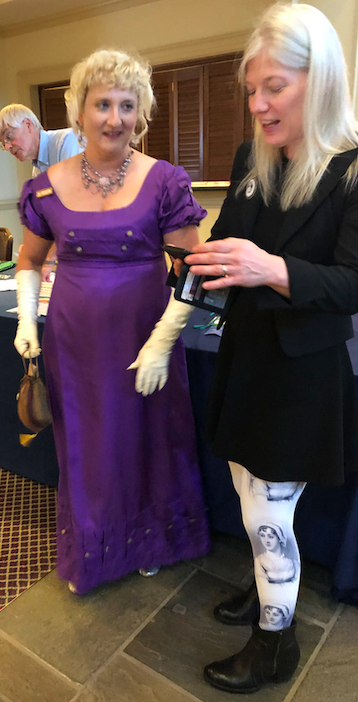
Herewith some highlights of this year’s AGM, for you readers who are interested in a glimpse of this delightful conclave:
—Let’s begin with some academic cred! Here are the lists of the conference’s breakout sessions and plenary addresses, complete with presenters’ bios. Nothing if not majestic scholarship on show!
—Continuing with the academic theme, my favorite part of the entire conference (what can I say? I’m a librarian!) was the tour and open house of Special Collections at the library of the College of William & Mary. William & Mary is second only to Harvard University as the oldest higher education institution in the US, was founded in 1693, and is the only one founded by royal charter, from, you guessed it, co-regnants William and Mary. For more detail on the tour, see this piece which appeared in William & Mary news. Overall, it was just amazing to see the depth of the holdings, and those related to Jane Austen in particular. Some of the most notable are thanks to an American Janeite, George Holbert Tucker, whose extensive and meticulously documented collection is now held at William & Mary. At the same time, there were many other period treasures on display, among them this donation of a lock of Queen Mary’s hair.
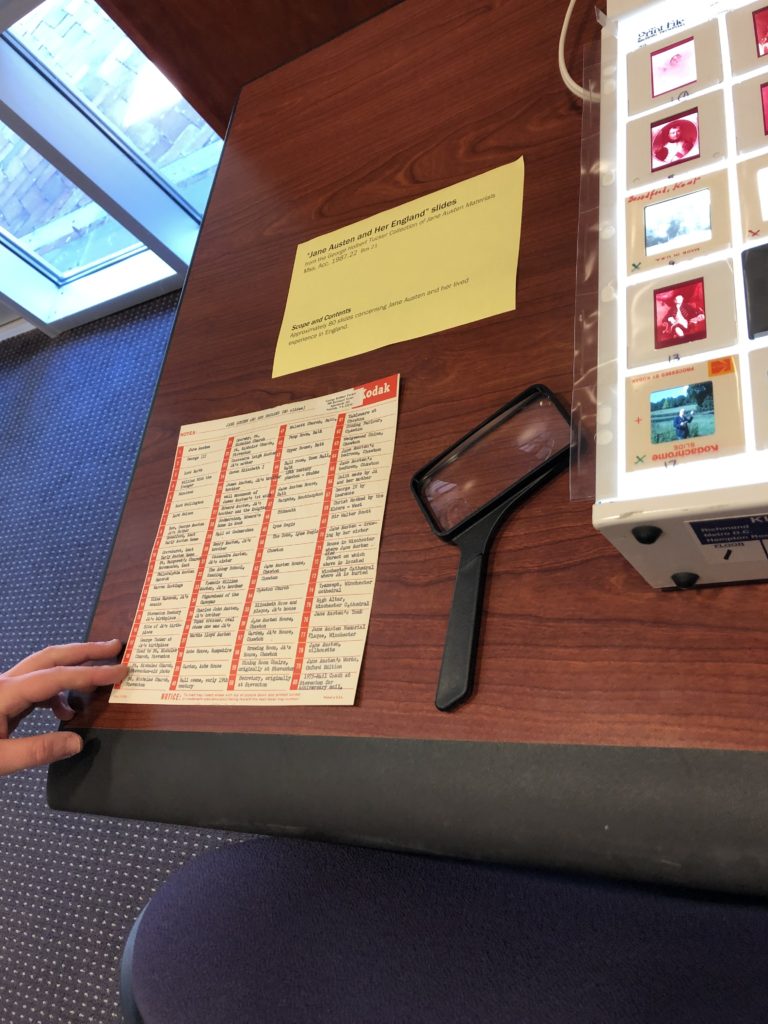
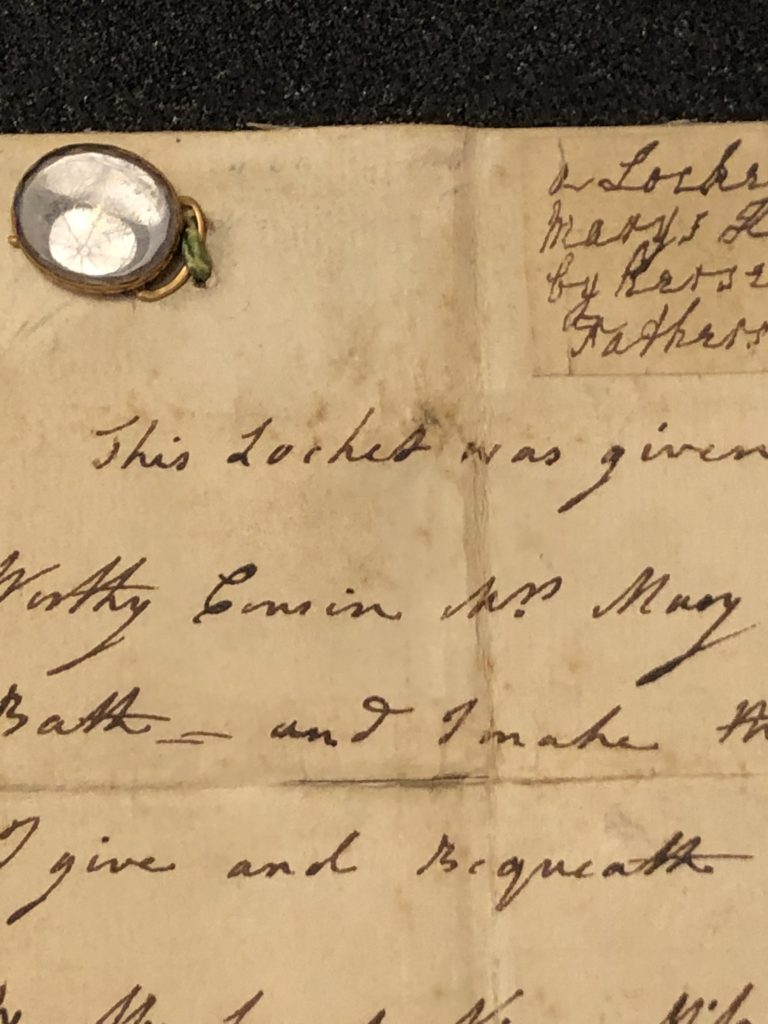
—Of course, there were also tours of Colonial Williamsburg. Of special interest was the home of George Wythe (the original structure still stands), with whom Thomas Jefferson lived and studied law for three years. John Marshall, fourth Chief Justice of the Supreme Court, also lived in Williamsburg and studied with Wythe; in addition, Marshall liked reading Jane Austen! He wrote of her: “Her flights are not lofty, she does not soar on an eagle’s wings, but she is pleasing, interesting, equable, yet amusing.”
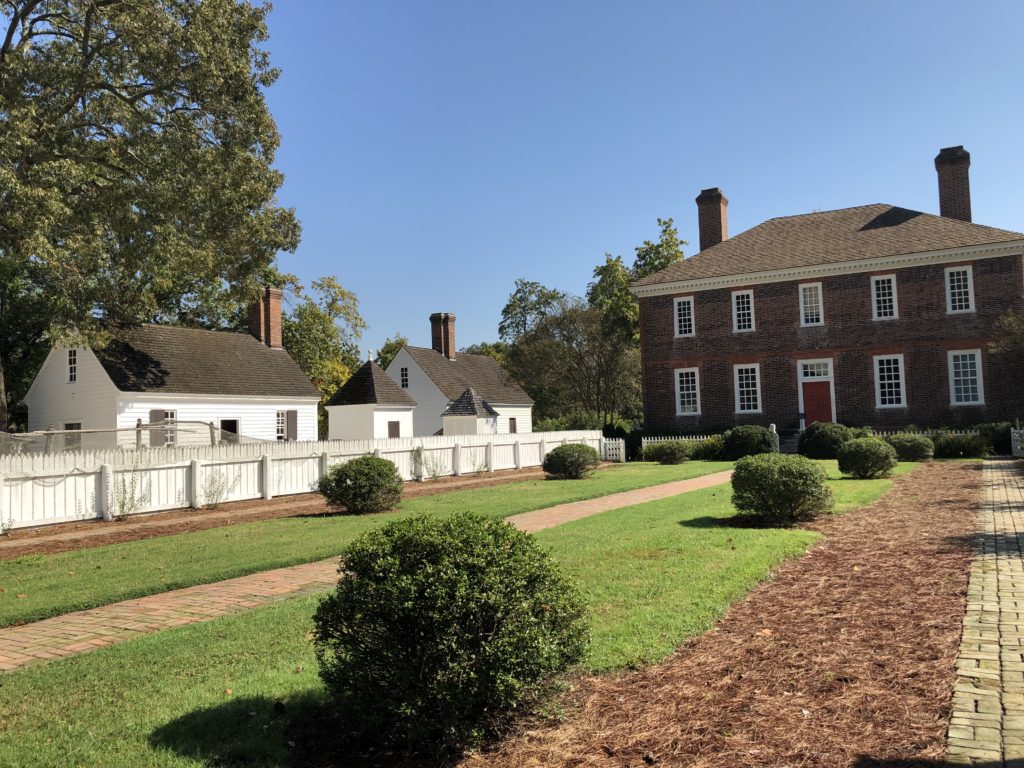
Also, being a librarian, I was very interested to see a demonstration of colonial-era typesetting and printing (unfortunately, the bookbinding demonstrations were not happening when I was there):
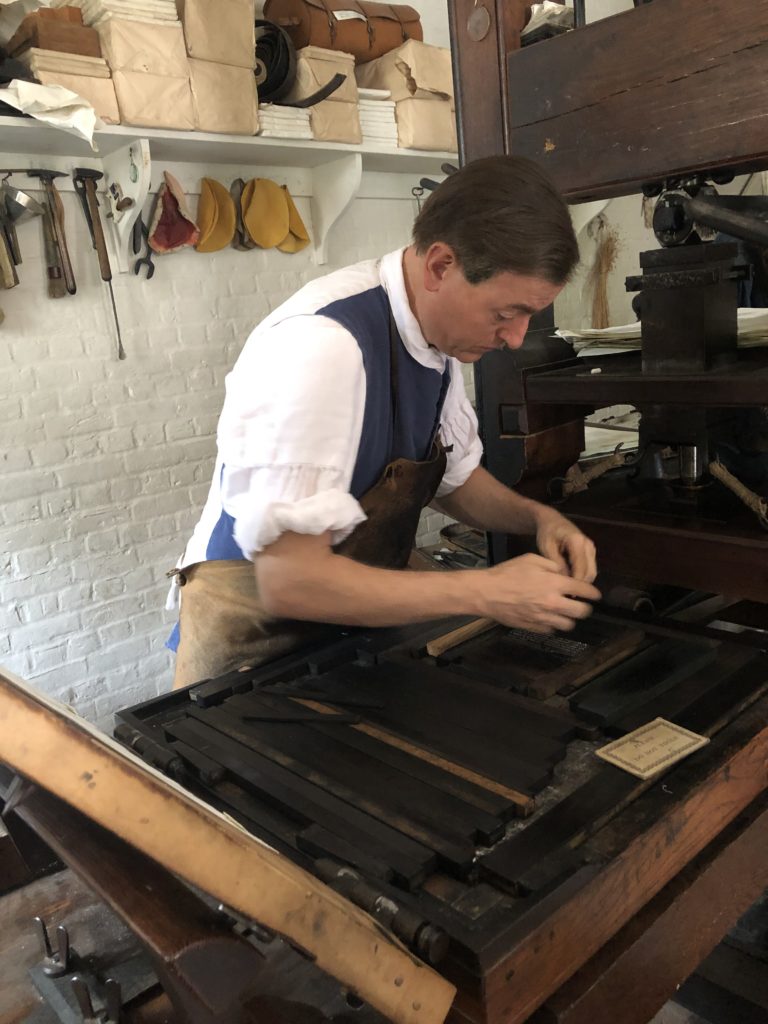
—The promenade and ball are the hallmarks of any AGM. After dinner, the entire assembly does a promenade, in their finery for the ball, around any location at which they happen to be meeting (when I attended an AGM in Washington DC, the promenade took place on the escalators connecting four levels of the hotel— quite a sight). This time, we strolled at dusk to the Governor’s Palace, led by four torch bearers (with modern protective gear—those torches were huge!) where an actress told us period-appropriate ghost stories. Then we gathered for the ball, to dance and drink and carouse. The music was provided by a small string ensemble, and a caller with the calmest voice imaginable led the lines of dancers in the sometimes-intricate moves. Luckily everyone was good-humored!

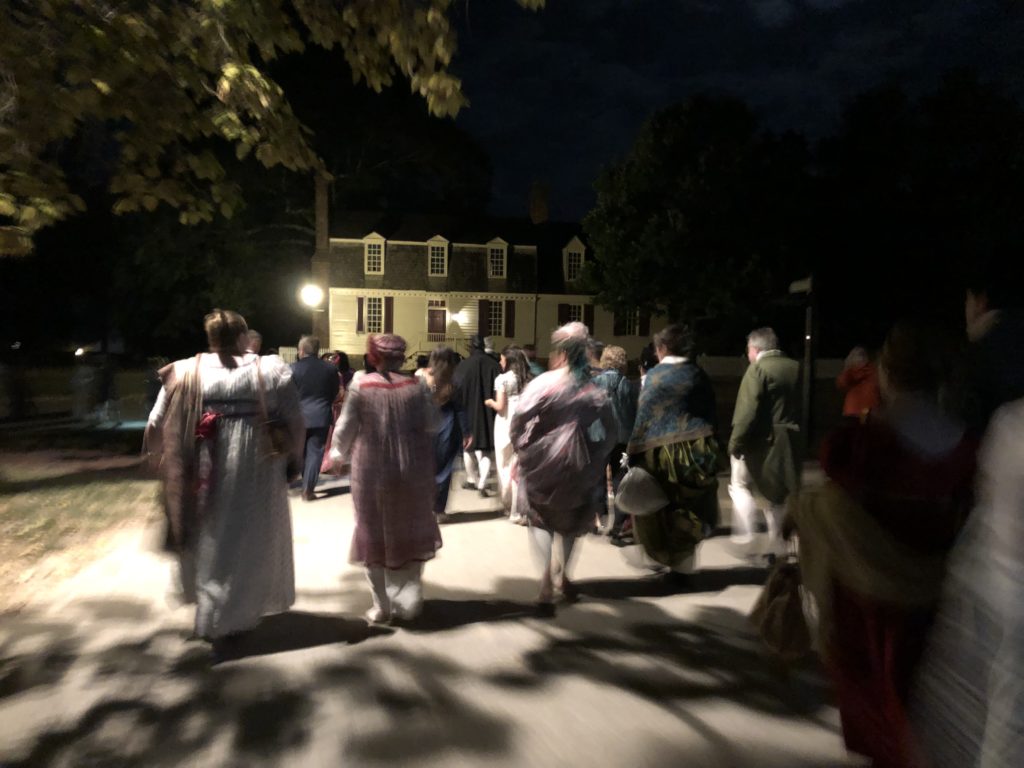
—The attention to dress is something that has always marked an assembly of Janeites (as it marked the interests of many of Jane Austen’s characters, at a time when distinctions in dress spoke more loudly than words). At the conference, this could be seen in both modern expressions (as in this T-shirt with its reference to Lady Catherine de Bourgh’s admonishment of Elizabeth Bennet in Austen’s Pride and Prejudice), and in scrupulous care with period detail in the many outfits worn by attendees, especially at the ball. In Colonial Williamsburg, where the park interpreters are dressed in colonial era period-appropriate apparel (mostly from the second half of the 18th century), conference attendees in Georgian/Regency attire (from the late 18th to early 19th centuries) didn’t stand out as much to our modern eyes. However, they would have stood out in the late 1700s, when wearing rich and patterned clothing identified one as a loyalist to the crown, and was positively unpatriotic (patriots wore homespun).
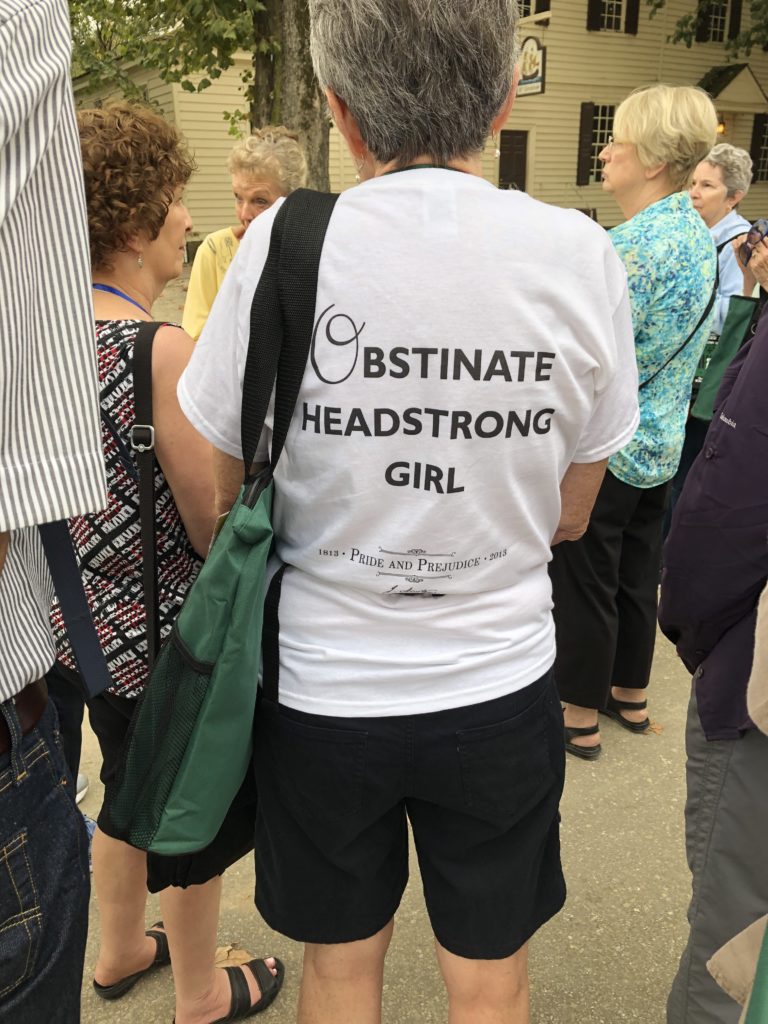
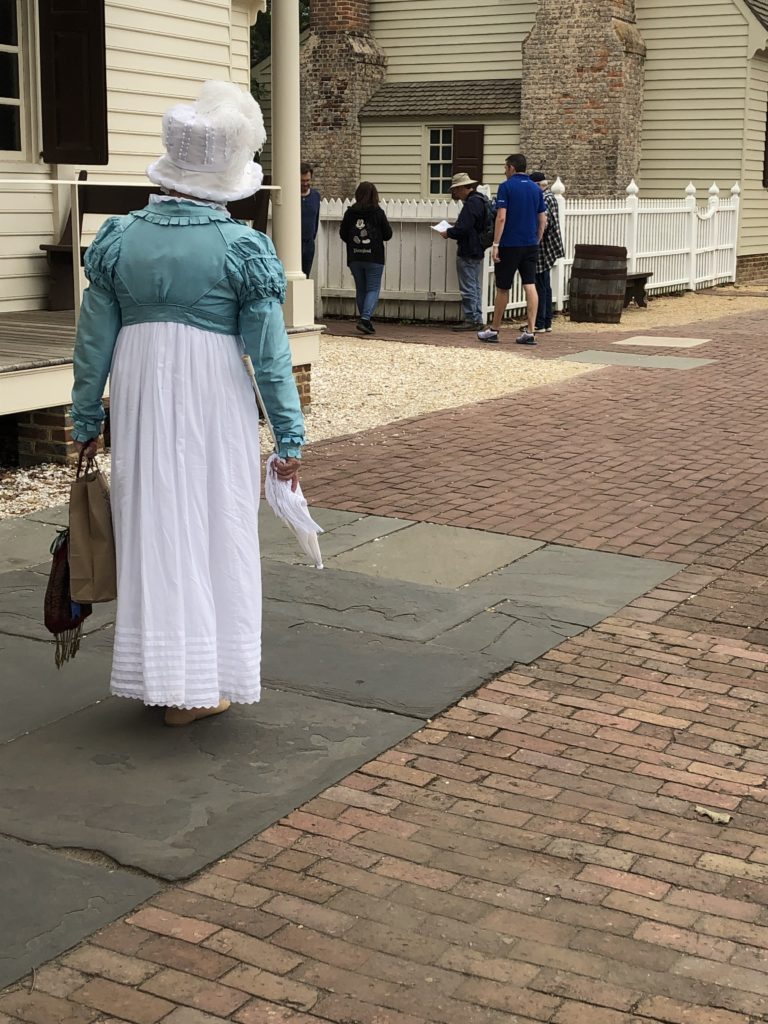
—On the final afternoon, there was an 18th century cricket demonstration. The rules were somewhat different then than in modern cricket! (the largely north American audience might not have been as aware of differences). And in case you are wondering that the photo shows a woman playing, Austen tells us that Catherine Morland, heroine of Northanger Abbey (the novel on which this year’s conference focused) loved cricket as a girl and played it with her brothers!
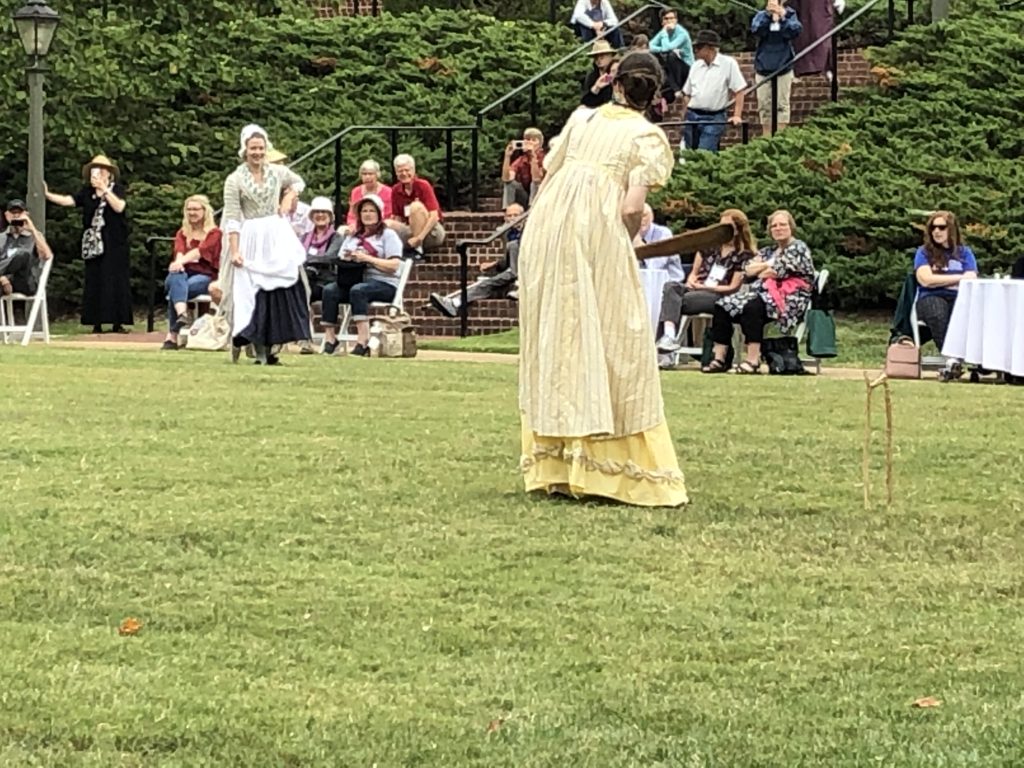
Intrigued? If you haven’t read any Jane Austen, or if you tried as a teenager and couldn’t warm to it, maybe have another look… Here is a complete set, free and online, from the wonderful Project Gutenberg. For introductions to her life and work, try Jane Austen (with an introduction by Harold Bloom), or The Cambridge Introduction to Jane Austen. And for more reading on Jane Austen devotees, try Among the Janeites or The Making of Jane Austen. For a video of a spirited debate comparing Jane Austen and Emily Brontë, check out this one from IntelligenceSquared. And consider joining us at the JASNA 2020 AGM next year in Cleveland!
*The term Janeite is often not used as a compliment; see this decidedly non-neutral Wikipedia overview. However, for the purposes of this article, the term is used affectionately!
New Display Case in Environmental Design Library
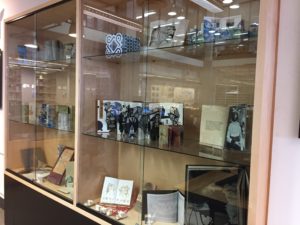
With the help of Semar Prom and the College of Environmental Design Fabrication Shop staff, the Environmental Design Library has installed a new display case. The new case will allow for informal display of artists’ books, the library’s rare books, and timely topical information relevant to the college. Currently on display are items from the upcoming 10/25/19 Hands On Artists’ Book event featuring newly acquired artists’ books.
Hands On 18: Recent Acquisitions – 10/25/19
Artists’ books are simply books made by artists. Whether tactile or conceptual, they range in thematic content including the political, the sentimental, the instructive, or the purely beautiful. Our next event will feature recent acquisitions for you to touch, turn pages, and experience. Friday, October 25, 2019 – 4-6pm, 210 Wurster Hall – Environmental Design Library.
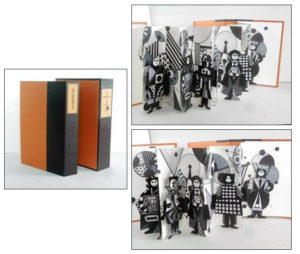
Hands On Artists’ Books: Water, Water Everywhere – 9/13 from 4-6 210 Wurster Hall
Artists’ books are simply books made by artists. Whether tactile or conceptual, they range in thematic content including the political, the sentimental, the instructive, or the purely beautiful. Our Hands On Artists’ Book events allow you to handle books from our rare book vault. For our first event of the academic year, we will have 20 books related to water, its presence and importance, for you to touch, turn pages, and experience. Wine and light refreshments will be served in the Environmental Design Library Atrium. hands on 17
The Versatility Chronicles: Hilary Schiraldi, Berkeley Librarian and Powerlifter
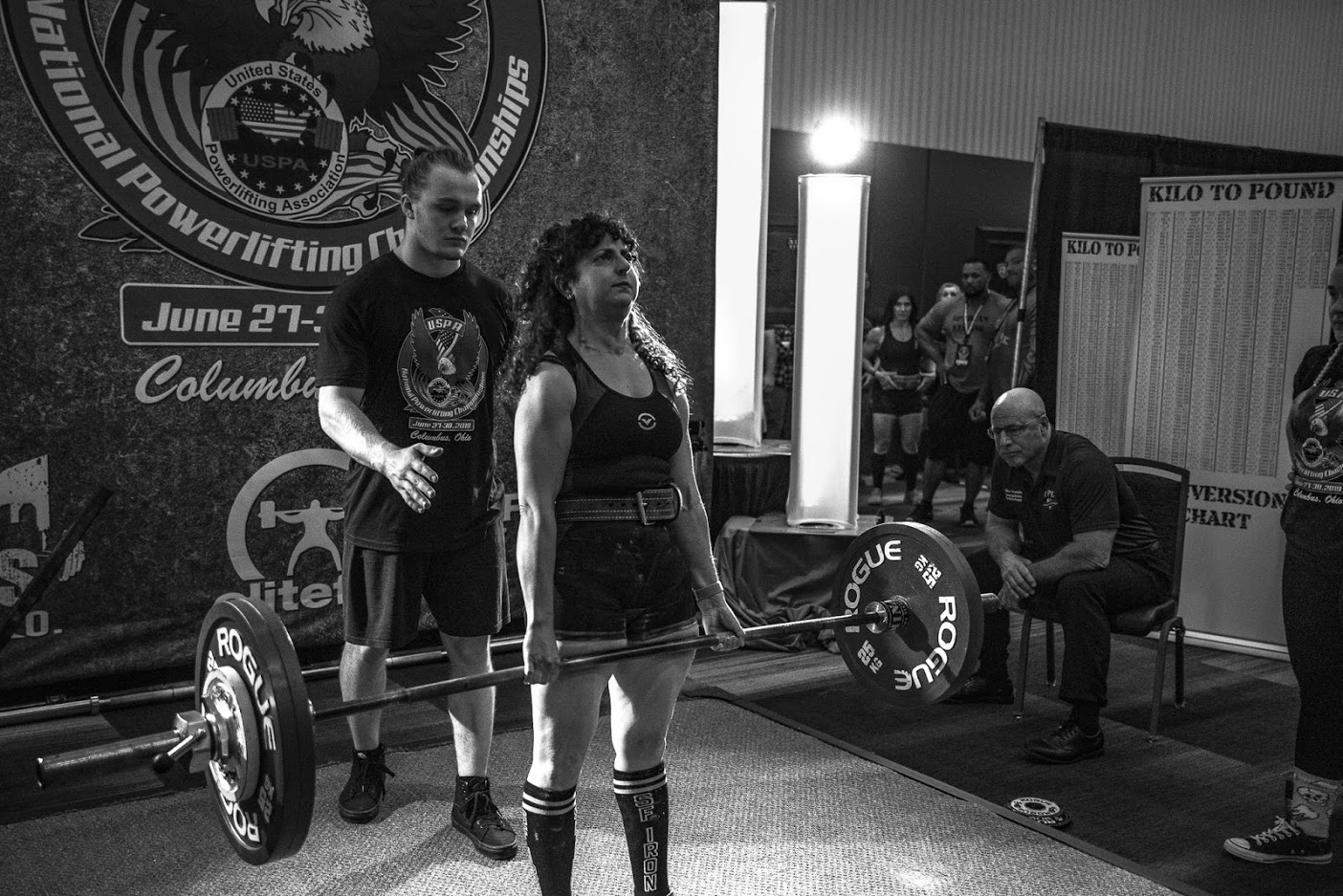
Library staff are just about the most intellectually curious people there are, and with social sciences being such an interdisciplinary scholarly endeavor, you’d expect people from our division to have diverse interests outside of the workplace as well as in. Watch this space– we’ll occasionally be highlighting some of the non-workplace pursuits of our versatile workforce, starting with the amazing Hilary Schiraldi. In addition to being a Business Librarian in the Social Sciences Division, she is a nationally ranked powerlifter in her age/weight class.
Hilary came to powerlifting (not the same as the weightlifting events we see in the Olympics, or Strongman, or bodybuilding, or even Highland Games) early. She realized in high school that she enjoyed working with weights, and at Berkeley she actually started teaching herself basic powerlifting by taking a class with Cal’s Rec Sports, joining the Rec Sports Facility, and (natch, she’s a librarian!) reading a book. But her practice changed direction when she had a little time to kill in the neighborhood South of Market in SF, and she found a barbell gym, SF Iron, and her new coach, Scott Kaplan.
With coaching, she really took off, and after doing several local competitions, eventually qualified to go to the USPA National Powerlifting, Benchpress and Deadlift Championships in Columbus, OH at the end of June. In the event, Hilary participated in three different types of lifts: the bench press and deadlift as you’d expect from the event title, and also the squat (here’s a good overview of what’s involved in these lifts). In each case, she lifted different sets of weights with different techniques (and luckily using different sets of muscles too, since all of her lifts happened on the same day). She had three attempts to lift (and increase the weight at each attempt) for each event. In the end, she was pleased with how she did, achieving her first attempt at the benchpress (darn it, her rear end lifted from the bench on the second attempt), her second attempt at the squat, and all the way to her third attempt at the deadlift, lifting 137.5 kg/303 lbs., a personal best. This meant she was third nationally in her age/weight class, earning a spot on the podium!
Like any world where people pursue a passion, powerlifting has communities and a culture of its own, and it’s one in which Hilary thrives (although she did enter another world in Columbus, making scented candles the day before she competed). It’s fascinating to listen to her talk about her experiences, and if you want to hear and see more, check out her Instagram account at hil_schi (also if you really want to follow in her footsteps, her coach is @the_kaplan_method and her gym is @sf_iron). And maybe consider learning to lift yourself? It’s great for your bones and musculature, especially your stabilizing muscles. Competing in all three events Hilary did is called full power, and who doesn’t want that? Here’s to versatility, and work-life balance, and Hilary’s FULL POWER!
Social Science Staff Selections for Summer–Sweet!
Summer is for relaxation and reading–and, if you are an incoming Berkeley student, there is a wonderful summer reading list, complete with links to previous lists (going back 30 years!) It made us in the Social Sciences Division wonder, what are our colleagues reading this summer? The answers are quite wonderful….
DAVID E:
Short reads guaranteed to wake you up if you’re not already woke.
A Billion Black Anthropocenes or None – Kathryn Yusoff – a concise, theoretical volume at the intersection of Black feminist theory and earth sciences that makes the point that geology, as currently defined in discussions of the Anthropocene, is a White construction that erases black and brown slavery, exploitation and objectification that created conditions now being referred to as the “anthropocene.”
Extinction: A Radical History – Ashley Dawson – a materialist analysis of of extinction theory that places capitalism at the heart of environmental degradation and the attack on the global commons. A response to those who, in the words of Andrew Ross, “have drunk the Kool-Aid of green capitalism.”
On Tyranny: Twenty Lessons from the Twentieth Century – Timothy Snyder – A Yale historian synthesizes lessons learned by deep exploration of capitalist and communist dictatorships into this very concise volume of “lessons” in preparation for the atacks against democracy heralded by the arrival of Trump to office.
Zen in the Art of Permaculture Design – Stefan Geyer – brief Zen meditations and thoughts related to the practice of permaculture — design agricultural thinking in the service of the planet and humanity.
ANN G:
Can’t We Talk About Something More Pleasant? – Roz Chast
It’s always amazing to me how New Yorker cartoonist Roz Chast gets to the heart of an issue with her dark, dry and hysterically funny perspective. In this graphic memoir she treats us to her wry, poignant, and totally on-the-mark observations about the aging of her parents. While this book can sometimes be tough to read, it also is endlessly thought-provoking and an unforgettable laugh-out-loud page-turner.
SUSAN E:
To the End of the Land – David Grossman
A brilliant, immersive journey with an Israeli mother hiking cross-country with one heartfelt goal– to not be home when the “notifiers” come to deliver the news of her beloved son, serving in the Israeli Army. As Colm Toibin’s review in the NYTimes states, “To say this is an antiwar book is to put it too mildly, and in any case such labels do an injustice to its great sweep, the levels of its sympathy.” It’s an incredibly moving exploration of the depth of parental love and the true cost of war.
BRIAN L:
Trail of Lightning – Rebecca Roanhorse
Here’s a great fiction suggestion, which I read last year. The author is an up and coming super star, she is Native American, and her post-apocalyptic fiction takes place with an all Native American cast, which gives a bit of a different flair to your standard post-apocalyptic piece. It’s a page turner!! Her sequel, Swarm of Locusts, was published a few weeks ago and I already devoured it.
CELIA E:
Pressure Cooker: Why Home Cooking Won’t Solve Our Problems and What We Can Do About It– Sarah Bowen, Joslyn Brenton, and Sinikka Elliott
Social scientists wanted to understand what it takes for working families to get food on the table—but 150 interviews weren’t enough. So they followed 12 North Carolina families around as they fought, played, shopped, and barbecued together. The result is a lively picture of what it takes to get food on the table while working, among all the pressures on women to cook “right” for their families. Stories from nine families are woven together in a critique of the easy advice we all get: shop smarter, make time, know what’s on your plate. This very readable book concludes with practical tips to make home cooking work better in your real American life.
MARGARET P.
Coming-of-age memoirs by stand-up comedians are a guilty pleasure. Bonus points if the words “gritty,” “harrowing” or “deeply affecting” can be used to describe them. Among the recent standouts in this genre: The Last Black Unicorn in which Tiffany Haddish covers everything from mental illness (her mother’s) and foster care to intimate partner violence and homelessness. Yes, this memoir is classified under “humor.” In Born a Crime: Stories from a South African Childhood, Daily Show host Trevor Noah describes growing up mixed race in the township of Soweto during the early post-apartheid era. The real hero of the story? Noah’s remarkable and willful mother Patricia. How to American: An Immigrant’s Guide to Disappointing Your Parents by Jimmy O. Yang. What immigrant story doesn’t involve learning English by watching BET RapCity, DJing at a strip club and driving Uber before hitting it big in Hollywood? (Okay, this memoir is not exactly harrowing but it’s definitely laugh-out-loud funny.)
MOLLY R.
In the Distance – Hernan Diaz
This is the story of a Swedish immigrant wandering through the 19th century American West, trying to reach New York from California in search of his brother. He doesn’t know the language to easily communicate with those he meets along the way nor does he know what to expect as he travels across the country. The book fully portrays this isolation and the descriptions of the landscape are beautifully written. Nominated for Pulitzer Prize in 2018
MONICA S:
Destiny Disrupted: A History of the World Through Islamic Eyes by Tamim Ansary is a fascinating sweep of the rise and heyday of Islam-based empires and cultures. The title says it all, I cannot add more to that description.
For summer armchair travel through a land and culture that was, not so very long ago, full of great hope and promise, check out Eric Newby’s delightful A Short Walk in the Hindu Kush.
NATALIA E.
The Terror – Dan Simmons
In 1845, Captain Sir John Franklin led an expedition to find the North-West Passage. With 134 men aboard the HMS Erebus and the HMS Terror, he set sail for the Arctic. No one heard from them again. This historical fiction focuses on what could have happened to the crew as they faced the environment, starvation, and an unknown creature hunting them down. It’s horror exploring the consequences of hubris, class tensions, and just general bad ideas. It’s also the basis of a great mini-series, also called The Terror, that came out last year.
The Dark Forest – Cixin Liu, translated by Joel Martinsen
I will not stop until more people read the Remembrance of Earth trilogy. But if you can only pick one 500+ page entry, make it The Dark Forest. The follow-up to The Three Body Problem, Earth faces an upcoming alien invasion that plans to wipe out humanity. How can the planet protect itself when the the aliens can monitor all information exchanged? And why does the best hope for survival lie in a … cosmic anthropologist? Read not just for the sci-fi action, which there is plenty, but for deep conversations on who has the right to be saved, who can be trusted, and why you probably shouldn’t get up close to shiny metal space objects.
Her Body and Other Parties: Stories – Carmen Maria Machado
Sure, I can talk about the retelling of the story of the girl with green ribbon, told from the perspective of the girl. Or the story of the woman who takes extremes to lose weight. But let me ask you this: have you not wanted capsule summaries of 272 episodes of Law and Order: SVU? Will the unit solve this murder? Will Benson and Stabler act on all that sexual tension? Why are all these ghost girls with bells for eyes hanging out in Benson’s apartment?? It’s called “Especially Heinous: 272 Views of Law & Order SVU”, and it’s in Her Body and Other Parties. You should read it.